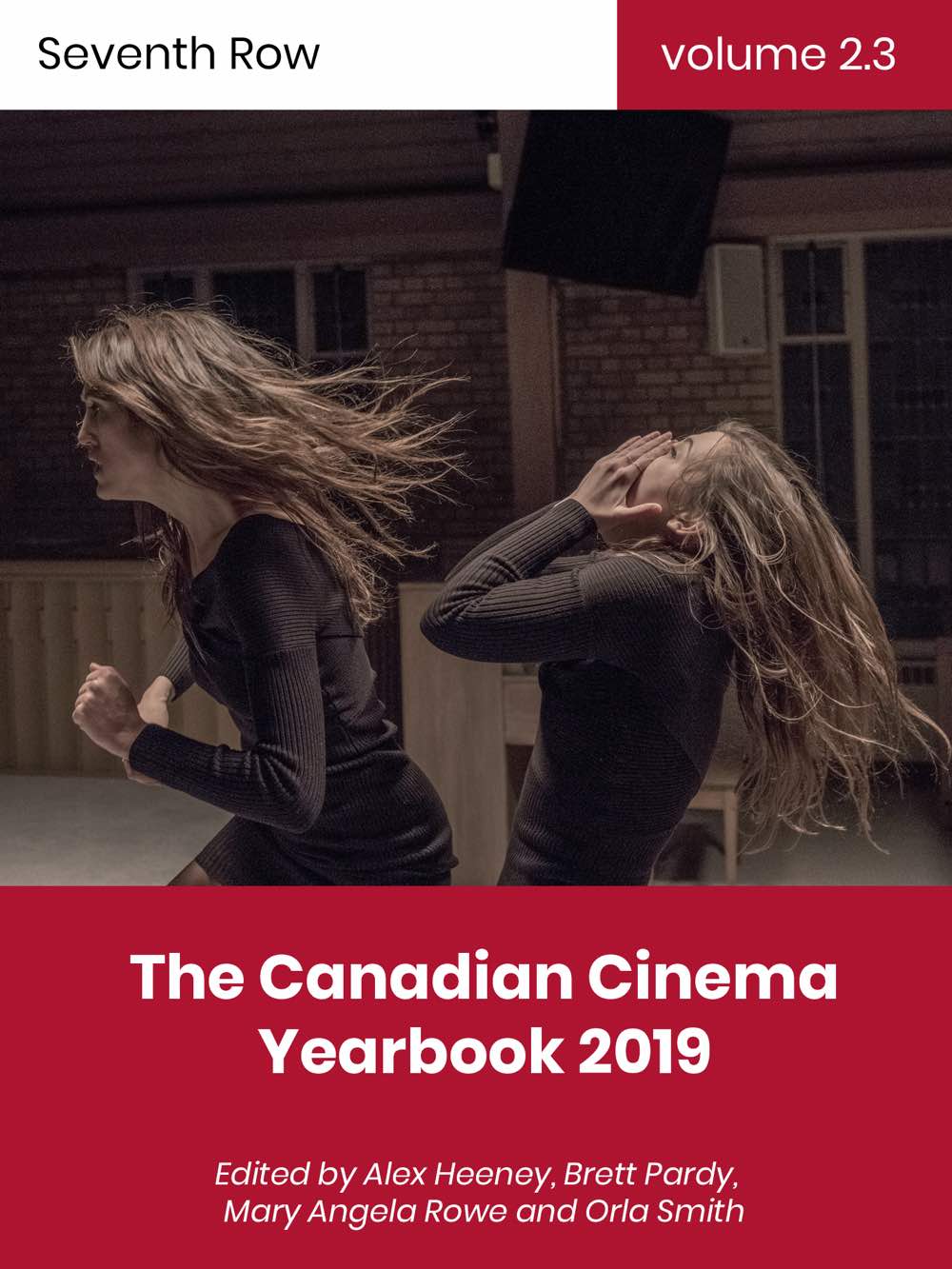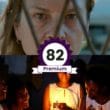Abenaki filmmaker Kim O’Bomsawin discusses her documentary Call Me Human (Je m’appelle humain) and telling the story of Joséphine Bacon and her friends. The film is now available on VOD and DVD in Canada.
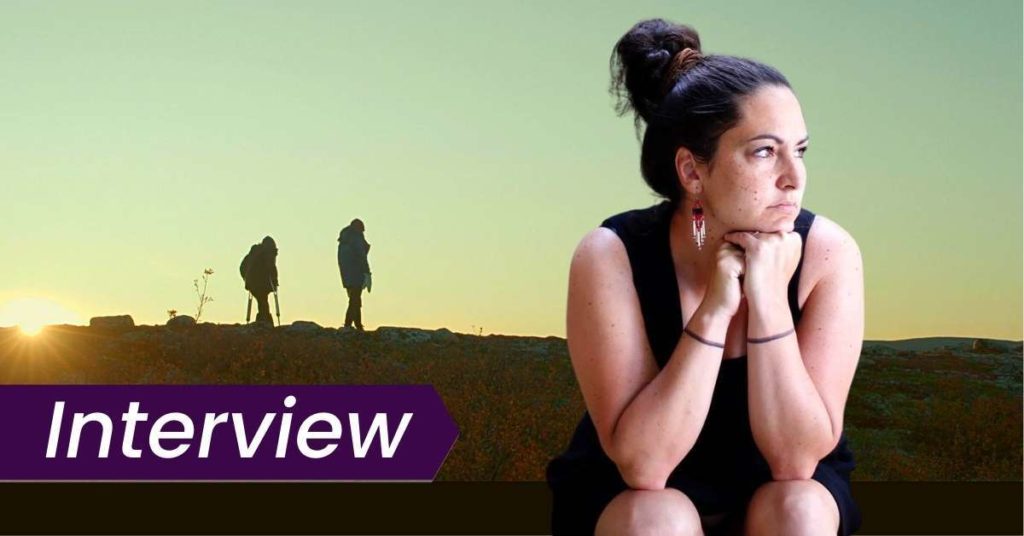
Discover one film you didn’t know you needed:
Not in the zeitgeist. Not pushed by streamers.
But still easy to find — and worth sitting with.
And a guide to help you do just that.
Through telling the story of renowned Innu poet Joséphine Bacon with her documentary Call Me Human (Je m’appelle humain in the original French), Abenaki filmmaker Kim O’Bomsawin is actually telling a very personal story to her. That’s not just because she adores Bacon and her work, an affection we instantly share as soon as we meet Bacon in the film. It’s because, like Bacon, O’Bomsawin’s sense of identity is split between two places: Montreal, where she lives, and her home territory. While Bacon was divorced from her land, her language, and her family because she spent fourteen years in a residential school, O’Bomsawin shares similar intergenerational scars because, as a Residential School Survivor, her grandfather never shared his culture with her, including the language.
In Call Me Human, O’Bomsawin and Bacon take us on a tour of the lands that are dear to Bacon: the streets in Montreal, and the Innu territory that she adores. In each place, Bacon talks to O’Bomsawin by looking into the lens or to a friend who is also on camera, narrating her connection to the land. Bacon’s own stories are complemented by archival footage of each of the places she visits, which includes footage of Innu people on the land from the time when she was growing up.
Just as Bacon splits her time between her two homes, structurally, the film moves back and forth between Montreal and Pessamit, Natashquan, and the tundra. By doing so, O’Bomsawin makes us constantly aware of a sense of displacement; of being torn from the land yet finding a beautiful home elsewhere, too. That’s something that O’Bomsawin understands deeply, having never lived on a reserve.
The film is also a celebration of the Innu language and the ways in which it holds the history of the Innu People. Bacon writes poetry in both Innu and French as a way of creating a permanent document of the Innu language, especially as words fall into disuse as colonisation creeps further in. Preserving the language is something O’Bomsawin also understands deeply and personally: because the Abenaki People had European contact so early, coupled with the legacy of residential schools, there are very few Abenaki people left who still speak the language.
Part of the ethos of O’Bomsawin’s approach to Call Me Human was to try to live up to Bacon’s words in the film’s visual and aural poetry. As Bacon reads out her poems in voiceover, O’Bomsawin — with the help of her cinematographers and sound team — creates gorgeous images of the land, letting us hear the sound of the sea, the wind, the birds, and more. Whether in Pessamit, the archipelago of Mingan, or other Innu territories, these sequences are a calming experience that plunge you into a different way of life, and a different pace. It’s in stark contrast to the hustle and bustle, noise, and slush of the Montreal streets, which are still infused with sunlight, because Montreal is also Bacon’s home.
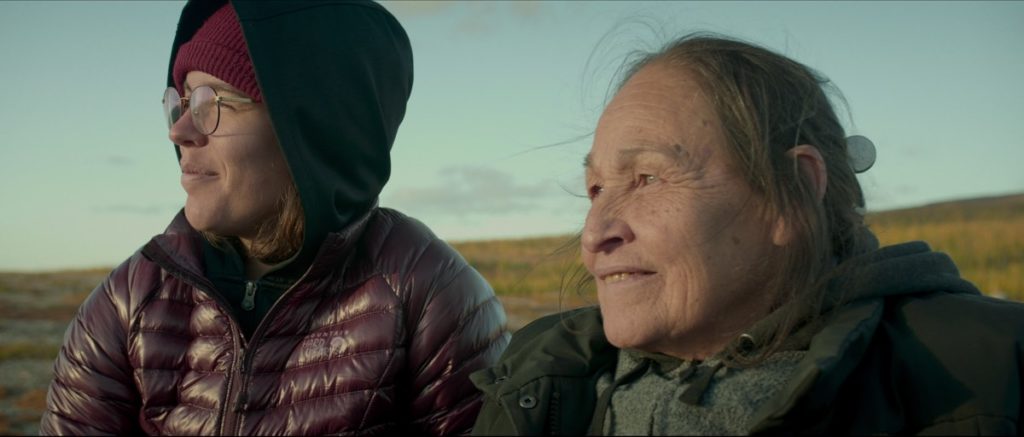
Call Me Human is at once the story of Bacon and the story of her community, with each scene involving a warm encounter with friends or family. Bacon refuses to dwell on her trauma, preferring to not talk about her experiences in residential school; she’s a joyful person, and that makes the film joyful, too. Bacon infuses her poetry with her joie de vivre, and brings us into the good and the bad times, drawing us into what the Innu language can express, even for non-speakers. In its specificity to the story of Bacon and her community, the film tells a broader story of colonisation, language revitalization, and the way Indigenous Peoples are fighting to maintain their culture. And of course, as the titular poem suggests, Bacon’s poems (and the film) are about the human experience.
Because of the SARS-CoV-2 pandemic, Call Me Human has yet to receive the international rollout that was planned, with its European premiere being cancelled last year. In the meantime, it’s been warmly embraced by Canadians across the country, both English-speaking and French-speaking. After premiering at Sudbury’s Cinefest Film Festival, where it won the Audience Award for Best Documentary, it picked up Best Canadian Documentary at both the Vancouver International Film Festival (juried) and the Calgary International Film Festival (audience award). At Cinemania, the annual Québécois film festival dedicated to French-language cinema, where the film screened opposite works by major auteurs and Cannes-label titles, it picked up the Audience Award for the entire festival. We named the film one of the best films of 2020.
Call Me Human is now available on VOD in Canada, and will be making the rounds at international festivals throughout the year. I sat down with O’Bomsawin via Zoom to talk about bringing this project to life, her personal connections to Bacon and the Innu community, and how the film was a life-changing experience for her, as well.
Seventh Row (7R): How did you meet Joséphine and what made you want to follow her for a documentary?
Kim O’Bomsawin: Well, I think everybody who’s First Nations in Quebec knows [of] Joséphine. When you work in the media industry, of course, you know her even more. But I didn’t know her personally before [making Call Me Human].
I wasn’t the one who had the idea to do this film. It was one of my first experiences working with Terre Innue, which is [an Innu-owned production] company that I now own with Florent Vollant and Alexandre Bacon. My first experience with them was a film about mute musicians [called Du teweikan à l’électro: voyage aux sources de la musique autochtone]. I really had a professional crush on this production company.
The producer, at the time, was Réginald Vollant, who has unfortunately [since] passed away, which is why I’m a shareholder now. He was really in love with Joséphine, professionally, of course, and was bugging her for years to do a film. She wouldn’t agree, but then, she finally said yes.
Since the film [that Terre Innue] and I were doing together was going so well, they came to me with the idea [for Call Me Human], and they asked me, “Would you agree to direct this film?” I was like, “Oh my god, of course, I agree! It’s like a dream film! But would Joséphine agree for me to do it?” And they said, “Yes! Just go and meet her.” And so we met.
Most of all, what she didn’t want was the film to be about herself. It’s not a biopic. I made that promise to her. She asked me to do a film about the people she loved. I said, “In your poetry, the people you love are the elders that told you all those great stories that [you based] your poetry on, so it’s going to be about them. And your family, of course, and this very particular connection you have to the land.” And she said, “Okay, let’s do this.”
Joséphine is such a nice person. You just want to be friends with her. We became friends and I told her, “This is not my film. This is our film.” But she keeps telling me, “Good job on your film!” And I’m like, “It’s your film!” If the film is such a success, it’s because of her. Maybe I am a part of it. But most of the success belongs to her. She’s a very humble person. That’s why she didn’t want to make a film about her. She thought that this would be boring, but her life is everything except boring.
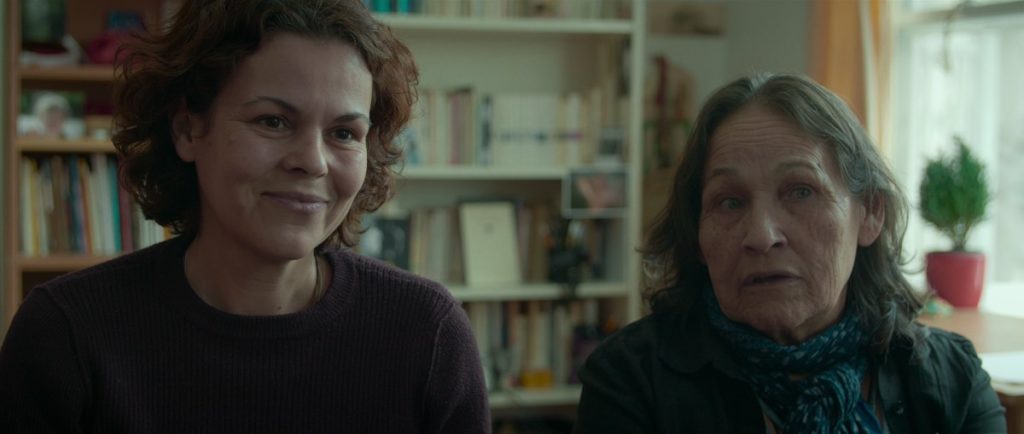
7R: Call Me Human is about Joséphine Bacon and the Innu community she is a part of. You’re not Innu, but you were working with Innu producers. What was the process for getting to know that community and the land?
Kim O’Bomsawin: In Quebec, we’re not in the same position as in the rest of Canada, where you have lots of filmmakers from First Nations and lots of actors. We’re far behind in Quebec. I was talking with another producer this morning, and we were like, “We need more people, because the demand is so there.” I think we’re at three directors in Quebec that can work in French.
In the past ten or twelve years that I’ve been working as a director, I’ve never worked on my own people. I will soon, through another project. But I’ve mostly worked with Innu Peoples, Atikamekw Peoples, and Cree Peoples, which are our biggest in numbers. They have kept their culture very much alive. That’s why they are very often those that are represented here in Quebec.
Innu People were far from being unknown to me. I have to admit that I might know more about Innu culture than about my own, which is something I’m trying to address, because I feel shame about it.
There’s so much to do [to tell Indigenous stories on film], and so few people that can do it. My obsession is to look everywhere and find youth that could become directors, producers, or whatever they want to do. We need help in Quebec.
7R: Could you tell me a bit about your own nation and your experiences there, especially since you’re planning on doing a project there?
Kim O’Bomsawin: I’m from the Abenaki First Nation. My community is Odanak; in the Abenaki First Nation, we have two communities. In English Canada, you say reserve, [but in Quebec], we say communities. There’s Odanak and Wôlinak, but I’m from Odanak. It’s a First Nation on the south shore of the St. Lawrence River. It’s a very nice place, close to Saint-François River. We’ve been in the area for 1,000 years. It’s a very, very small reserve.
[Along] with the Maliseet People in Quebec, we are the two First Nations where the majority of us are living outside the reserves. My dad [and his siblings] grew up in Montreal, and my mother is non-native. So that’s why I grew up in Montreal, far away from my culture and the Abenaki Peoples. As for the rest of the southern First Nations, I think we’ve been hit more by colonization. Our cultures were less protected. For example, the Atikamekw People were very much isolated. They were able to keep the language.
As for us, there are so few people that can speak Abenaki now. I think there are not more than five people that are still talking it fluently. There are classes. We can learn it. But there’s no one to talk with, or not a lot. That’s because we’ve been in contact with the Europeans for so long, much more than people who are Cree or Innu, so we suffer more from that.
I grew up in Montreal. My dad was super proud of being Native. He grew up in a very poor family. My granddad experienced the traumas of the residential schools, and he never wanted to share the culture with his sons, because to him, it was more of a problem than something to be proud of. He was a fluent speaker of Abenaki, and he never wanted to teach his sons the language. So I grew up with a dad who knew very few [things] about the culture, but he was very proud to be Abenaki, so at least that pride was something that I carried.
Then, I decided to do something with it and to come back to my culture when I did my studies. I have a master’s degree in sociology. At the time, there were no Indigenous classes in university. I dedicated all my work, papers, and everything to Indigenous matters. That’s how I educated myself. I had to do it by myself. This is something that I’m proud of.
I became a filmmaker by mistake. I never thought I would become a filmmaker. I always wanted to be someone who would change the perception of the Indigenous people. I wanted to be a teacher and to use that profession to be a changemaker. At some point, I was doing my master’s degree, and there was this director who was directing a documentary series for APTN about Indigenous People who were living in the cities. I became one of the protagonists of the series, and I hated being in front of the camera, but I did it. I was twenty-five at the time.
I didn’t know what I was embarking on, but I was like, “Oh my god, this is something that looks fun.” In terms of my life objectives [to be a changemaker for Indigenous People], it was even more powerful than just being a teacher. I could [connect to] many more people, from the young to the old. So I decided to change careers and get into cinema. I learned how to become a cineaste by myself, surrounded by very, very talented people.
7R: It’s interesting that you grew up in Montreal, since in Call Me Human, Joséphine is torn between Montreal and her home land. There’s such a rich sense of place in the film, in both locations.
Kim O’Bomsawin: It became very natural to me, because she’s been living in Montreal since she was eighteen years old. She says, “I’m a Montrealer. But I’m also Innu, and I also belong to the tundra, and to Pessamit and to Natashquan.” She’s a very nomadic person. Montreal has a special meaning to her. It’s not only bad to her. She likes living in the city. She raised her children in Montreal. That’s why I think she’s staying in Montreal now.
We’re all telling her, “Why don’t you go back to Pessamit?” She’s always speaking about the importance, to her, of seeing the horizon, and this is something she can’t have in Montreal. She lives in this small apartment [in Montreal], and she could have her own house and rest [in Pessamit]. But she wants to stay close to her kids. And we can all understand that. So she always goes back and forth.
She belongs in many places, so that was very, very important [to think about] in the first step of thinking about the film and writing the script — that we would do this back and forth. I always try to reflect this in my filmmaking: Indigenous people don’t tell stories in a linear way. We’re always going in cycles and in circles. This approach of being in Montreal, and then making the link to the land, was so easy to do with her poetry, because from one point to another, we could go back and forth through those different universes and have the audience still understand and follow us.
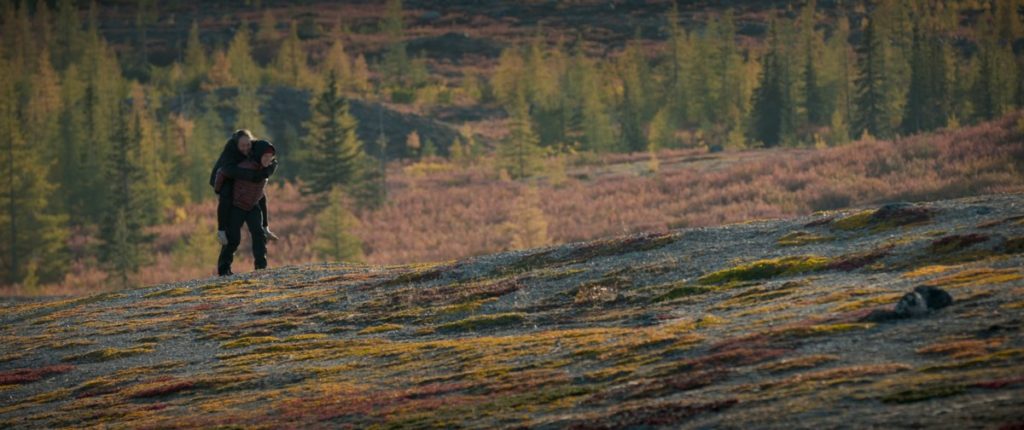
7R: One thing I really liked in Call Me Human (Je m’appelle humain) was how you take us to a place that was important to Joséphine, and then you illuminate the history of that place through archival footage. How did you find the archival footage and work out where to use it?
Kim O’Bomsawin: That was obvious to me, since her poetry is based on ancient stories by people that are not here anymore. Some of them are still living, but very few of them. The Innu People have a big [opportunity to revisit their history], as they had this filmmaker called Arthur Lamothe, a French guy, but he was living in Quebec forever. He passed away about ten years ago. He dedicated his life to filming the way of life of the Innu Nation. So if, say, Joséphine was Atikamekw, I would never have been able to find all those super archives. But because of Arthur Lamothe’s archives and the NFB, we were able to find gems everywhere.
Those very particular protagonists that we find in her poetry were all characters in [Arthur Lamothe’s] films. There’s the scene in the beginning of the film where we see Joséphine in a small theatre, watching archival [footage] and reacting to what she sees. It reminds her of those very people that she had the chance to meet. That brought her back to her culture, because of course, she went to the residential schools for fourteen years. I don’t know anyone else that spent so many years there. She lost parts of her culture along the way. She never had the chance to live the ancient way of life, but she had the chance to meet all those people.
All those people told her how they were living on the land, but she never experienced it herself. But when you read her poetry — and this is what I find the most impressive — you have the impression that she spent all her own life in the bush, or in the nutshimit, as she calls it.
In our first meeting, I was asking tons of questions, and one of them was, “If you had a place you’d like to go in the world before you die, where would that be? Somewhere you’ve never been.” And she told me, “I’d like to go to Mushuau Nipi”, which is this place in the film where we go with the caribou. It’s a well known area for the Innu Nation, because they’ve been there for millennia hunting caribou. I was like, well, “Isn’t it the place you’ve spent most of your life?” [because she writes about it in her work]. And she was like, “No, I’ve been there only once and for a few days.”
That [place is] where she took the inspiration to write her second book, [A Tea in the Tundra]. “I want to go back before I die,” [she said,] “because this place is the most important place in the world to me. I haven’t had the chance to experience it much.” I was stunned, because I hadn’t realised how little time she’d spent there. She did such a great job writing it. So that’s why we went there. She led us there, actually.
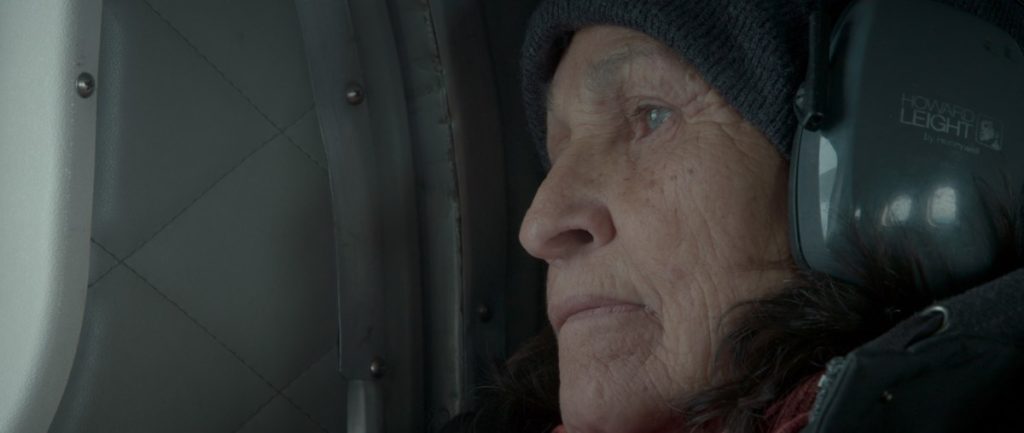
7R: There are all these wonderful shots of her reacting to and looking at the land there.
Kim O’Bomsawin: Yeah. She was so grateful to be there.
It was physically very hard, even though we had people to cook and to help, and we had food. We weren’t living only from the land. We were hoping for wild meat, and of course, we ate fish, caribou, and geese. But we didn’t have to rely on that. We were in a very luxurious setting.
But even though we had all these things, it was very hard living there. It would freeze at night, so we had to keep a fire. Just going to the bathroom for her was hard. She would wake up and her face was swollen. But even then, she couldn’t be more happy to be there.
It was probably, personally, my most significant experience as a human being, being on that land where there was nothing altered by humans. No electrical wires. We didn’t see a plane for a week, and no boats, no nothing. Just us. with tents, in the middle of the tundra.
7R: Wow. Are there other people living there?
Kim O’Bomsawin: No, it’s a site that belongs to the Innu Nation, and there is only a very small window of time where you can go. If you go during summertime, there are too many flies. And the summer is not long.
There’s a group of people who go there during the month of September, and they do invite people, mostly Innu People, to live the cultural experience. We were welcomed by them. They were so welcoming. They were so happy to have Joséphine there. To them, it was an honour to have her there.
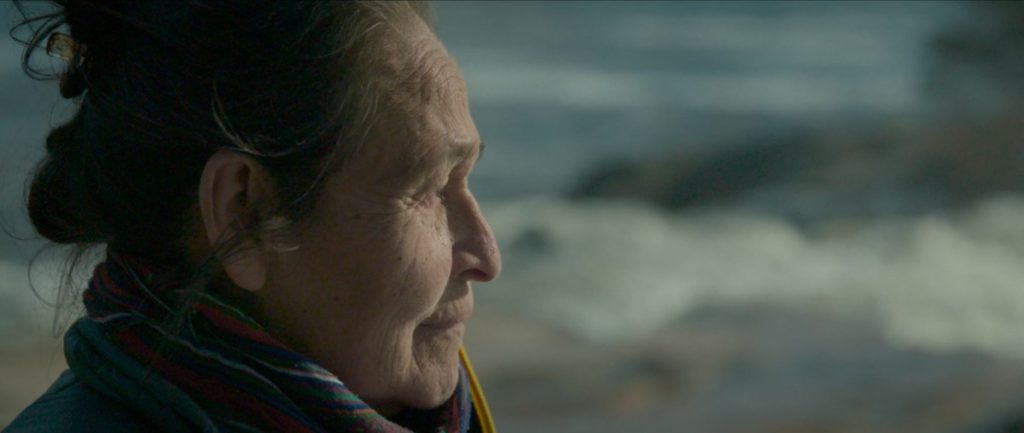
7R: How did you craft the opening of the film? I really loved the shots of the land and the sound of the land, too.
Kim O’Bomsawin: [The place where the opening is shot is] an archipelago, the archipelago of Mingan. There’s an Innu reserve there called Ekaunitshit. It’s their place. Joséphine loves to go there. We left Montreal, and we went all the way up to Natashquan, where she was adopted by a family. On our way, we stopped in every Innu village, so we stopped in Ekuanitshit, and we were like, wait, we should go to the island, because it’s so peaceful and beautiful there. It became the opening of the film.
7R: I saw that you worked with two cinematographers on the film. How did that come to be?
Kim O’Bomsawin: It happened because we had to stop the production at some point. I can’t remember why. I had started [shooting the film] with the DP [director of photography] as a friend of mine, Michel Valiquette. And then, when we started again, he wasn’t available anymore. I was very sad, at first, but then I had the chance to meet Hugo Gendron, a very, very good cinematographer. He did all the rest of the film. They work in pretty much the same way, so it blends well. Normally, I would prefer to work with only one person for one film, but things happen.
I want to thank them, because people are always talking to me about the breathtaking images, and I have nothing to do with this. I wasn’t the one pressing record. That’s their legacy to the film.
7R: Did you have conversations with them about how you wanted them to approach the shoot?
Kim O’Bomsawin: I put a lot of pressure on myself, with this film, because I was like, “If there’s going to be a film about Joséphine Bacon’s work, there’s not going to be two. This is it. I’m the one doing it.”
Her poetry is so amazing. She first writes [each poem] in Innu, and the Innu language is very image-based. Every word is an image. Our languages are not very conceptual. They are only based on images. When you translate it in French, you can still see all these images. And images are cinema. It was very fun, because I had the chance to do work that was full of images.
Those images [in Joséphine’s poetry] were so wonderful that I told my team we have to be as good as her poetry was. That’s not an easy thing to do. I think we were able to at least honour her work with those images. We all read her poetry. We had it in our mind when we talked about the way we would film stuff.
There’s something about [the poems’] rhythm, also. Joséphine, when she speaks, [her rhythm] is… not slow, and not fast; it’s Joséphine. It’s very particular to her. Silences are very important. Laughs are very important.
We really took the time to shoot still images. We didn’t do many handheld shots. It was all on a tripod. And then, it was the magic of editing. Alexandre [Lachance], my editor, and I did an awesome job putting those images together to give it the right rhythm.
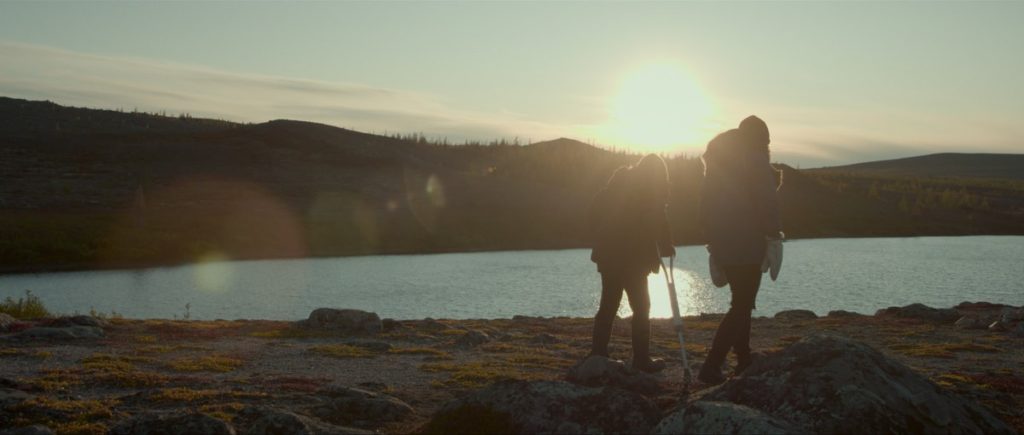
7R: Can you tell me a bit about the sound design in Call Me Human and the process for recording the sound and developing the sound?
Kim O’Bomsawin: I think Lynne Trepanier is the best sound recordist I’ve worked with [to date]. She’s obsessed with recording land and nature ambiences. So my sound editor [Luc Raymond] had the chance to work with those very rich ambiences. The sound you hear is the sound that was taken on the field. We didn’t have to go through many libraries of sound. It was very real. It’s what we heard.
Sound, obviously, is something very important in the film, because the sound of the land, to me, is very important: the wind, the birds, the waves.
And then, there was the music. I worked with Alain Auger, who’s a non-native composer. Here in Quebec, I don’t know any Indigenous musicians who do film scores. But Alain knows the North very well, because he adopted an Inuk child. I wanted it to feel very North-y. I love his score. He did a great job.
Alain composed the score alongside Luc, who did the sound editing. They always work together. So sometimes, it’s Luc behind something, like the drums. And sometimes, it’s Alain.
7R: Could you tell me about the animation at the beginning of Call Me Human, which accompanies the titular poem, “Je m’appelle humain”?
Kim O’Bomsawin: The artist was Mekky Ottawa, who is an Atikamekw visual and graphic artist that also does animation. In the beginning, we had big hopes about having more animation in the film, but it’s so expensive that we decided not to follow up with that. But I’m happy that we have been able to keep it in the opening. Mekky didn’t know Joséphine before [working on the film], and she only saw a picture. She came back to us with a first sketch, and we kept it until the end.
7R: Do you have a particular audience in mind for Call Me Human? Who do you want to see it most?
Kim O’Bomsawin: I did this film first for Joséphine. I wanted her to be the one who would like the film. I thought that if she would like the film, then others would like it, as well, because everybody likes what Joséphine likes.
I thought it would be more appreciated by French-speaking people, because the film is about poetry that is first written in French. Yes, there’s been a translation of it, but I thought that [something would be lost] in translation. But it seems that I was wrong, because the first two festivals we did were Vancouver and then Calgary, and we won Best Canadian Documentary [at the Vancouver International Film Festival (a juried prize) and the Best Canadian Documentary Audience Award at the Calgary International Film Festival]. So I was very, very surprised. It meant that, in some way, the English audience was able to feel the same thing that the French audience would.
7R: What are you doing to nurture new talent in Quebec?
Kim O’Bomsawin: The demand [for Indigenous stories] is so heavy that I would need to clone myself. In Quebec, it’s just me, Sonia [Boileau] who does fiction, and Angie-Pepper O’Bomsawin. But that’s about it. We’re all trying to form a new generation of directors in Quebec because we need more arms.
I keep my eyes and ears open. We have a list of young talent, and we offer them mentorships and real jobs so that they can learn. But sometimes, for ten tries, there’s only one that turns out to be really interested in film. So it’s gonna take a long time before we see a new bunch of filmmakers. I would also love to have people that can do scores, editing, [cinematography], or sound recording. We don’t have [Indigenous people working in these jobs] here.
You could be missing out on opportunities to watch great films like Kim O’Bomsawin’s Call Me Human (Je m’appelle humain) at virtual cinemas, VOD, and festivals.
Subscribe to the Seventh Row newsletter to stay in the know.
Subscribers to our newsletter get an email every Friday which details great new streaming options in Canada, the US, and the UK.
Click here to subscribe to the Seventh Row newsletter.
